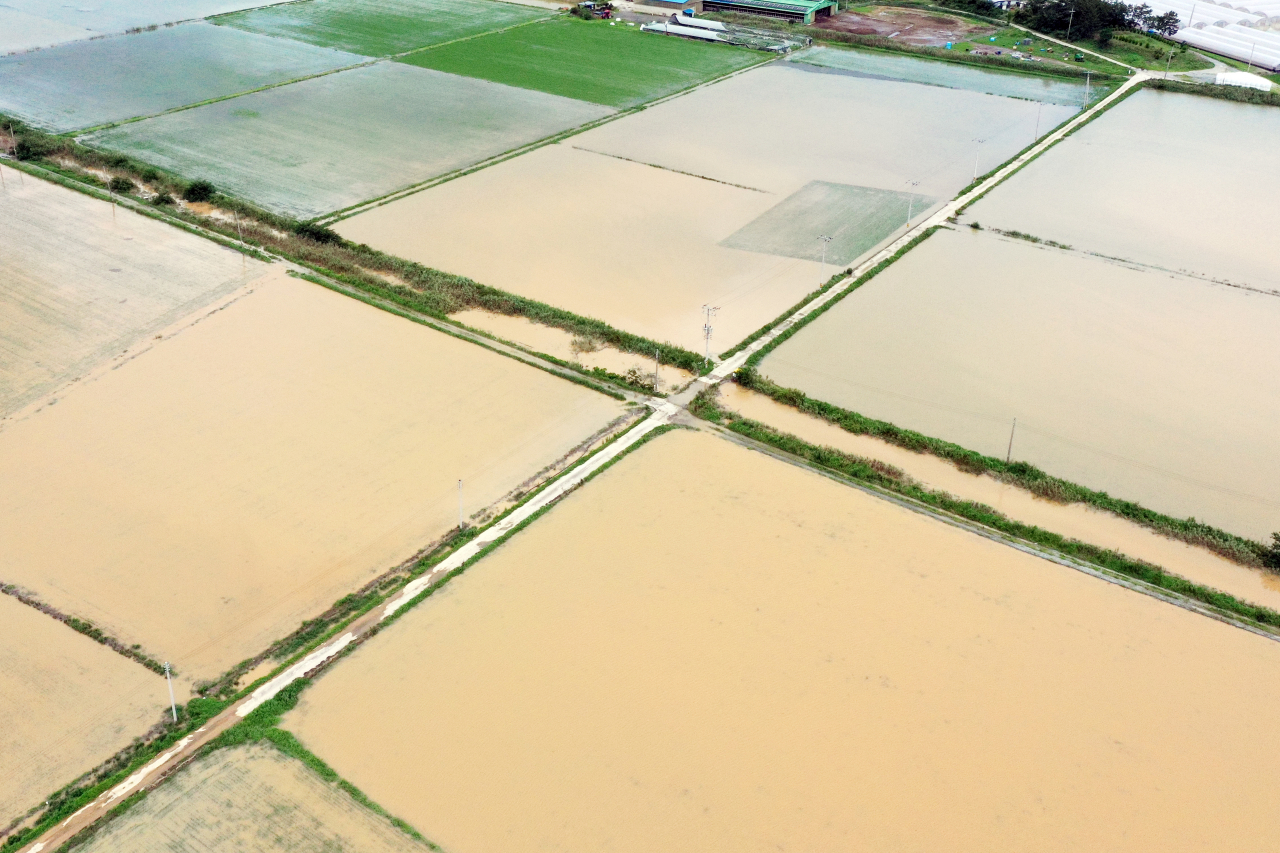Monsoon rain ravages farms, kills livestock
Concerns grow over further hikes in food prices
By Lee Yoon-seoPublished : July 17, 2023 - 15:00

Nearly 30,000 hectares of farmland across the country were damaged by the recent torrential rain, raising concerns that agricultural product prices -- which have recently soared due to a heat wave -- will consequently rise even more.
Some 27,094 ha of farmland have been damaged between July 10 and Monday due to record rainfall, according to a report released by the Ministry of Agriculture, Food and Rural Affairs.
By region, North Jeolla Province suffered the most damage, with 14,569 ha of land flooded. South Chungcheong Province followed with 7,832 ha, North Chungcheong Province at 1,802 ha, North Gyeongsang Province had 1,636 ha, and South Jeolla Province 1,195 ha.
The report also showed a total of 579,000 livestock had been killed in the recent rainstorms, including 2,000 cows, 4,003 pigs, 43,043 ducks and 512,533 chickens.
The Food Ministry said the price of agricultural products is expected to go up in the latter half of the year as a result of the storms.
"During the summer, the price of agricultural products usually increases because the production rate goes down amid high temperatures. If the weather becomes hot, vegetables tend to grow at a slower rate, causing supply issues," an official from the Ministry of Food told The Korea Herald.
"Also, there's less sunlight during the monsoon season. A lot of vegetables' growth, especially cucumber and pumpkin, are dependent on the amount of sunlight they get," he added.
Prices of agricultural products in Korea are already under pressure.
The wholesale price of spinach, which is sold in bunches of 4 kilograms, stood at 45,620 won ($36) as of Friday, up 180 percent from the month before, according to the Korea Agro-Fisheries & Food Trade Corp.
Prices of red lettuce and green lettuce had surged 114 percent and 91 percent over a month, respectively, with other vegetables such as Chinese cabbage jumping 54.7 percent during the same period. Prices of zucchini (33.4 percent), tomatoes (30.9 percent), and radishes (25.9 percent), also rose simultaneously, compared to the month before.
The Food Ministry official said further price hikes are likely as agricultural product prices are greatly influenced by climatic factors.
Also, with Chuseok, or Korean Thanksgiving, in September, when the demand for agricultural products is at a peak, chances are that prices will rise even higher in the latter half of the year, he added.
Vice Agriculture Minister Han Hoon said via a press release that forming joint emergency pest control teams and setting up technical guidance for systematic analysis of damages done to farmlands were essential to prevent secondary damages caused by the floods.
The spread of infectious disease pollutants among livestock and outbreak of pests in crops, caused by flooded barns and farming facilities, could further hinder the agricultural products' supply and demand system, adding that each governmental body needs to make all-out efforts to minimize additional farmland damage. He also asked farmers to refrain from outside activities, and cooperate in preemptive evacuation measures in accordance with public action guidelines, to prevent further damages.



















